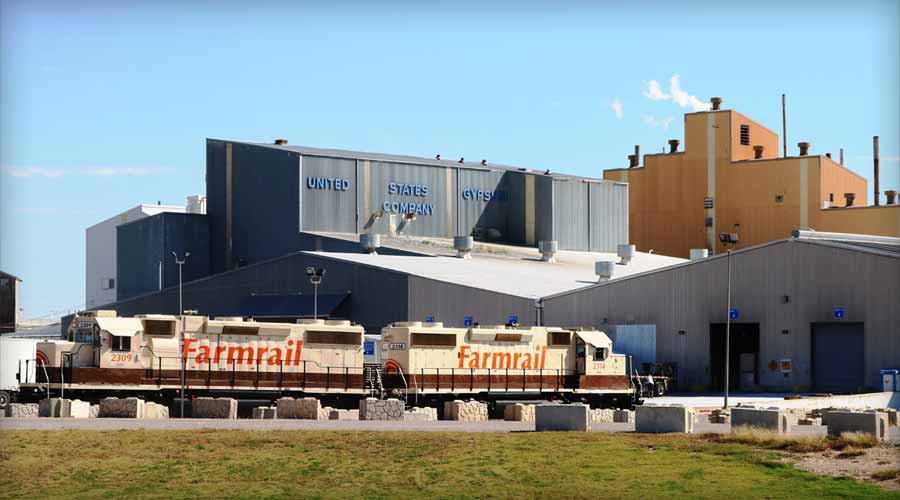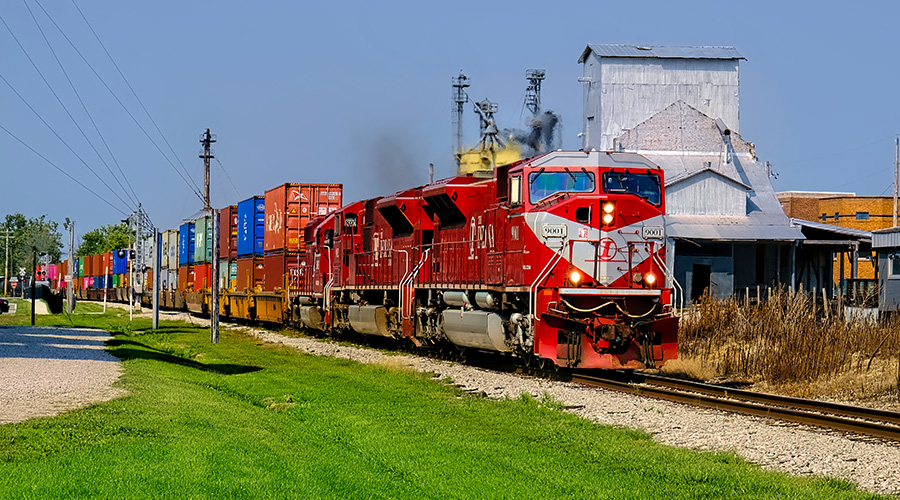More ups than downs for short-line traffic in Q1
4/11/2022
By Jeff Stagl, Managing Editor
In terms of traffic generation, the first quarter wasn’t great for U.S. and Canadian short lines, but it wasn’t all that bad, either. Total volume inched up thanks to gains in most commodity groups.
A total of 454 small railroads collectively handled 1,714,921 carloads in the 13-week period ending April 2, up 0.7% year over year, according to the RailConnect Index of Short Line Traffic.
Compiled by Wabtec Corp.’s GE Transportation subsidiary, the index shows volume rose in nine of 14 commodity categories. The biggest gainers were coal (up nearly 13% to 109,648 units); waste and scrap materials (up 8.2% to 79,198 units); petroleum and coke (up 6.9% to 58,616 units); and stone, clay and aggregates (up 6.4% to 156,645 units).
In addition, paper products traffic increased 3% to 103,831 carloads and ores traffic rose 2% to 39,800 carloads.
The largest decliners were “other carloads,” which fell 14.5% to 22,179 units, and grain loads, which tumbled 9.9% to 205,538 units. Lumber and forest products traffic dipped 3% to 77,803 carloads, and metals and products traffic slipped 0.7% to 116,080 carloads.
Intermodal loads fell slightly — by 0.19% — to 308,923 units.
Emails exchanged with officials from six regionals and short lines revealed four of them posted traffic gains in Q1. Some of the officials also described what caused their railroad’s quarterly result.
Farmrail System Inc.’s volume ballooned about 50% compared with its first-quarter 2021 total. Chemical, oilfield mud and grain traffic soared by 180.5%, 128.3% and 75.6%, respectively.
In addition, cottonseed carloads jumped 24.4% year over year and cotton loads (via intermodal) remained strong for Farmrail, which operates the Farmrail Corp. and Grainbelt Corp. short lines in Oklahoma.
 The operator of two short lines in Oklahoma, Farmrail logged a nearly 50% jump in Q1 carloads. Farmrail System Inc.
The operator of two short lines in Oklahoma, Farmrail logged a nearly 50% jump in Q1 carloads. Farmrail System Inc. “Cotton and cottonseed are both moving in 2022, while we moved cottonseed all of last year but cotton-via-intermodal moves didn’t start until the second quarter in 2021,” said Farmrail President Judy Petry. “Oilfield volume is trying to pick up a bit (and I’m praying that it comes back even more). The last couple of years have been horrible due to little-to-no drilling activity.”
Watco — which owns and operates 44 short lines in the United States and Canada — notched a 9.3% traffic gain in the quarter. The company registered a “large push” in three major traffic categories: metallic ores and minerals, which shot up 59.4%; non-metallic minerals, which climbed 20.1%; and forest products, which jumped 18.4%, said Watco Communications Director Tracie VanBecelaere.
Madison Railroad — a 22.7-mile short line in Indiana — logged a 7.5% traffic gain in Q1, while the New York, Susquehanna and Western Railway Corp. (NYSW) recorded a 12% jump.
 The 22.7-mile Indiana short line grew carloads by 7.5% in 2022’s first quarter. Madison Railroad
The 22.7-mile Indiana short line grew carloads by 7.5% in 2022’s first quarter. Madison RailroadThe NYSW registered carload gains in a mix of commodities, said Melanie Boyer, the head of government and public relations for the regional, which operates over 400 miles of track in New Jersey, New York and Pennsylvania.
For the Indiana Harbor Belt Railroad Co. (IHBRR), merchandise traffic rose, but weak auto loads negatively impacted overall Q1 traffic to the point it was “a little below flat,” said IHBRR President John Wright. However, based on the 2022 budget and revenue plan for the Chicagoland railroad — which is the largest U.S. switching carrier — auto traffic is expected to pick up during the remainder of the year.
Q1 carloads also slipped — by a scant 0.6% — for Buckingham Branch Railroad (BBR), which operates 280 miles of track in Virginia.
“The biggest losses were in an inbound butane move (we’re not sure why) and an inbound cement move (a customer relocated),” wrote BBR President Steve Powell.


